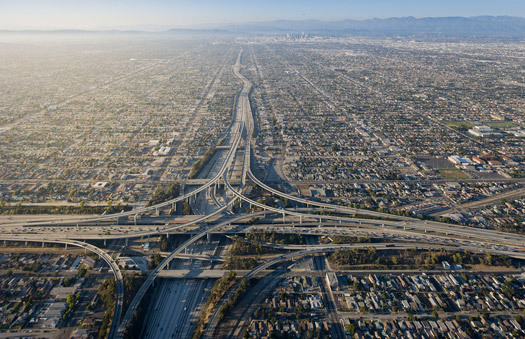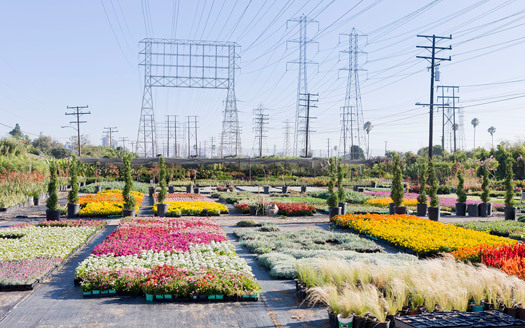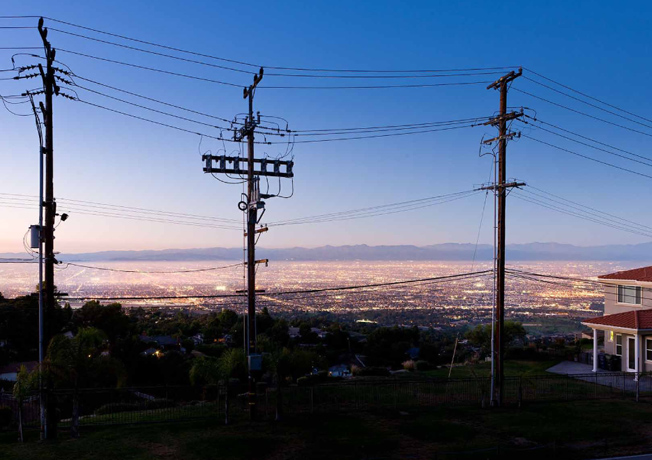 [Image: Photo by Iwan Baan, from No More Play: Conversations on Urban Speculation in Los Angeles and Beyond edited by Jessica Varner].
[Image: Photo by Iwan Baan, from No More Play: Conversations on Urban Speculation in Los Angeles and Beyond edited by Jessica Varner].
Last autumn, I had the pleasure of speaking with architects Michael Maltzan and Jessica Varner for the new book No More Play: Conversations on Urban Speculation in Los Angeles and Beyond.
 [Image: Photo by Iwan Baan, from No More Play: Conversations on Urban Speculation in Los Angeles and Beyond edited by Jessica Varner].
[Image: Photo by Iwan Baan, from No More Play: Conversations on Urban Speculation in Los Angeles and Beyond edited by Jessica Varner].
That conversation was then included in the book itself, alongside conversations about the city with such artists, architects, and writers as Catherine Opie, Matthew Coolidge, Mirko Zardini, Edward Soja, Charles Jencks, Qingyun Ma, Sarah Whiting, James Flanigan, and Charles Waldheim. It will surprise no one to read that my interview is the least interesting of the bunch, but it’s an honor even to have been invited to sit down as a blogger amidst that line-up.
 [Image: Photo by Iwan Baan, from No More Play: Conversations on Urban Speculation in Los Angeles and Beyond edited by Jessica Varner].
[Image: Photo by Iwan Baan, from No More Play: Conversations on Urban Speculation in Los Angeles and Beyond edited by Jessica Varner].
Overall, the book represents a series of interesting decisions: it doesn’t document Michael Maltzan’s work—though, with several recently completed, high-profile projects, including Playa Vista Park, Maltzan could easily could have spent the book’s 200+ pages discussing nothing but his own productions (in fact, Maltzan’s buildings are absent from the publication).
Instead, the book instead features newly commissioned photographs of greater Los Angeles by the ubiquitous Iwan Baan; further, Michael’s and Jessica’s introductory texts are not about the firm’s recent buildings but are about those buildings’ urban context. It is about the conditions in which those buildings are spatially possible.
 [Image: Photo by Iwan Baan, from No More Play: Conversations on Urban Speculation in Los Angeles and Beyond edited by Jessica Varner].
[Image: Photo by Iwan Baan, from No More Play: Conversations on Urban Speculation in Los Angeles and Beyond edited by Jessica Varner].
In many ways, then, the book is astonishingly extroverted. It’s a book by an architecture office about the city it works in, not a book documenting that firm’s work; and, as such, it serves as an impressive attempt to understand and analyze the city through themed conversations with other people, in a continuous stream of partially overlapping dialogues, instead of through ex tempore essayistic reflections by the architects or dry academic essays.
 [Image: Photo by Iwan Baan, from No More Play: Conversations on Urban Speculation in Los Angeles and Beyond edited by Jessica Varner].
[Image: Photo by Iwan Baan, from No More Play: Conversations on Urban Speculation in Los Angeles and Beyond edited by Jessica Varner].
Iwan Baan‘s photos also capture the incredible diversity of spatial formats that exist in Los Angeles—including camouflaged oil rigs on residential hillsides—and the range of anthropological subtypes that support them, down to fully-clothed toy dogs and their terrycloth-clad owners.
 [Image: Photo by Iwan Baan, from No More Play: Conversations on Urban Speculation in Los Angeles and Beyond edited by Jessica Varner].
[Image: Photo by Iwan Baan, from No More Play: Conversations on Urban Speculation in Los Angeles and Beyond edited by Jessica Varner].
In an excerpt from Maltzan’s introduction to the book published today over at Places, Maltzan writes that the city’s “relentless growth has never paused long enough to coalesce into a stable identity.”
Los Angeles and the surrounding regions have grown steadily since the founding of the original pueblo, but the period immediately after World War II defined the current super-region. During this time, the economy accelerated, and Los Angeles became a national and international force. Today, innovation and development define the metropolis as the region multiplies exponentially, moment by moment, changing into an unprecedented and complex expansive field. The region continues to defy available techniques and terms in modernism’s dictionary of the city.
This latter point is a major subtheme in the interviews that follow: exactly what is it that makes Los Angeles a city, not simply a “large congregation of architecture,” in Ole Bouman’s words. As Bouman warns, “If you don’t distinguish between those two—if you think that applying urban form is the same as building a city, or even creating urban culture—then you make a very big mistake. First of all, I think it’s necessary for architectural criticism, in that sense, to find the right words for these very complicated processes, to distinguish between two processes or forms that, at first sight, appear the same, but that are, in reality, very different.”
At the end of his introductory notes, Maltzan remarks that “we have reached a point where past vocabularies of the city and of urbanism are no longer adequate, and at this moment, the very word city no longer applies” to a place like Los Angeles.
“Perhaps it is not a city,” he suggests. Perhaps something at least temporarily indescribable has occurred here.
 [Image: Photo by Iwan Baan, from No More Play: Conversations on Urban Speculation in Los Angeles and Beyond edited by Jessica Varner].
[Image: Photo by Iwan Baan, from No More Play: Conversations on Urban Speculation in Los Angeles and Beyond edited by Jessica Varner].
You can read Maltzan’s essay in full over at Places; or I’d encourage you to pick up a copy of the book as a way of encouraging this kind of discursive engagement with the city—what Varner describes in her introduction as a set of outward-looking, nested narratives “which then fold back onto themselves” from conversation to conversation, and will only continue to develop “as the city advances forward.”
 [Image: From No More Play: Conversations on Urban Speculation in Los Angeles and Beyond edited by Jessica Varner].
[Image: From No More Play: Conversations on Urban Speculation in Los Angeles and Beyond edited by Jessica Varner].
The book also comes with a small fold-out poster, one side of which you can see here.
(Earlier on BLDGBLOG: Agitation, Power, Space: An Interview with Ole Bouman).

Perhaps the answer to the traditional architectural monograph lies in the above discussed book. How boring it is to see glossy image after glossy image of an architects portfolio put on bookshelf. It seems at a time when most architects are not building much, that investigation should take the lead.
You should read Edward Soja's Post Modern Geographies. The last chapter of the book is about Los Angeles. It is a very interesting effort to comprehend Los Angeles. He is a professor at UCLA.
I'm sure it's mentioned in the book, but any architectural analysis of Los Angeles warrants a mention of Reyner Banham. Written in the early 1970s he also struggles with applying the term "city" to Los Angeles. This book sounds like another interesting read, Geoff; I'll definitely be adding it to my list.
How about some props to a Midwest education. Jessica Varner is an Architecture graduate from the University Of Nebarska-Lincoln. Go Big Red!!!
Great post. Just wanted to point out that, on Amazon, it appears you can get the most recent edition, but it won't ship until June 30th.
Thanks, Guy—I've updated the post.